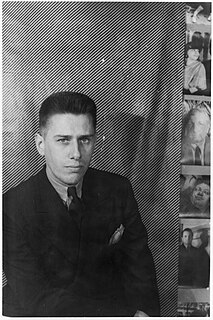 W
WPaul Cadmus was an American artist widely known for his egg tempera paintings of gritty social interactions in urban settings. He also produced many highly finished drawings of single nude male figures. His paintings combine elements of eroticism and social critique in a style often called magic realism.
 W
WJames Henry Daugherty was an American modernist painter, muralist, children's book author and illustrator.
 W
WAaron Douglas was an American painter, illustrator and visual arts educator. He was a major figure in the Harlem Renaissance. He developed his art career painting murals and creating illustrations that addressed social issues around race and segregation in the United States by utilizing African-centric imagery. Douglas set the stage for young, African-American artists to enter public arts realm through his involvement with the Harlem Artists Guild. In 1944, he concluded his art career by founding the Art Department at Fisk University in Nashville, Tennessee. He taught visual art classes at Fisk until his retirement in 1966. Douglas is known as a prominent leader in modern African-American art whose work influenced artists for years to come.
 W
WElsie Driggs was an American painter known for her contributions to Precisionism, America's one indigenous modern-art movement before Abstract Expressionism, and for her later floral and figurative watercolors, pastels, and oils. She was the only female participant in the Precisionist movement, which in the 1920s and 1930s took a Cubist-inspired approach to painting the skyscrapers and factories that had come to define the new American landscape. Her works are in the collection of the Whitney Museum of American Art, the Houston Museum of the Fine Arts, the Fine Arts Museums of San Francisco, the James A. Michener Art Museum in Pennsylvania, and the Columbus Museum of Art, among others. She was married to the American abstract artist Lee Gatch.
 W
WJoseph Amadeus Fleck was an American painter and muralist. His works include The Red Man of Oklahoma Sees the First Stage Coach, in Hugo, Oklahoma, and First Mail Crossing Raton Pass and Unloading the Mail in Raton, in Raton, New Mexico.
 W
WVincent Glinsky was an American artist.
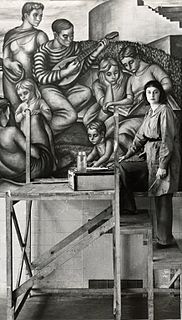 W
WMarion Greenwood was an American social realist artist who became popular starting in the 1920s and became renowned in both the United States and Mexico. She is most well known for her murals, but she also practiced easel painting, printmaking, and frescoes.
 W
WWilliam Victor "Bill" Gropper was a U.S. cartoonist, painter, lithographer, and muralist. A committed radical, Gropper is best known for the political work which he contributed to such left wing publications as The Revolutionary Age, The Liberator, The New Masses, The Worker, and The Morning Freiheit.
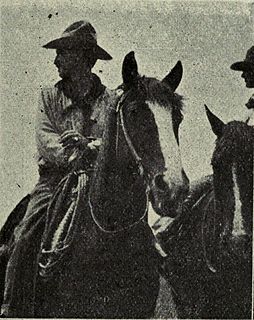 W
WWilliam Penhallow Henderson was an American painter, architect, and furniture designer.
 W
WRico (Federico) Lebrun was an Italian-American painter and sculptor.
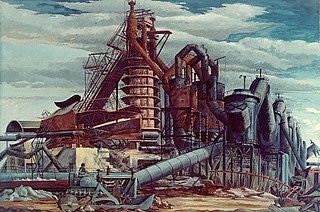 W
WLudwig Mactarian was an American painter, muralist, and illustrator.
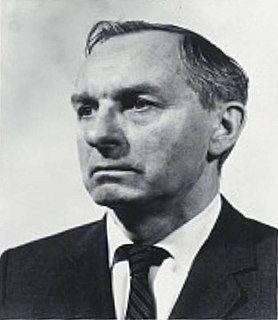 W
WBruno Mankowski, was a German-born American sculptor, carver, ceramicist and medalist.
 W
WReginald Marsh was an American painter, born in Paris, most notable for his depictions of life in New York City in the 1920s and 1930s. Crowded Coney Island beach scenes, popular entertainments such as vaudeville and burlesque, women, and jobless men on the Bowery are subjects that reappear throughout his work. He painted in egg tempera and in oils, and produced many watercolors, ink and ink wash drawings, and prints.
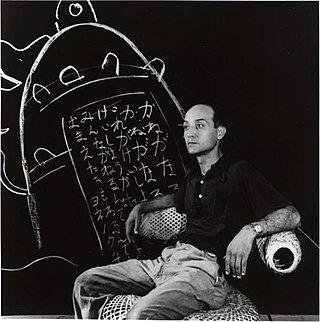 W
WIsamu Noguchi was a Japanese-American artist and landscape architect whose artistic career spanned six decades, from the 1920s onward. Known for his sculpture and public artworks, Noguchi also designed stage sets for various Martha Graham productions, and several mass-produced lamps and furniture pieces, some of which are still manufactured and sold.
 W
WAnn Louise Rice O'Hanlon was a 20th-century American visual artist who painted murals. O'Hanlon is best known for a fresco painted on the wall of Memorial Hall at the University of Kentucky in 1934 for the Treasury Relief Art Project. The fresco has repeatedly attracted negative attention for what many view as its romanticized depiction of African American slaves. In 2020 University of Kentucky President Eli Capilouto announced the fresco would be removed.
 W
WGuy Pène du Bois was a 20th-century American painter, art critic, and educator. Born in the U.S. to a French family, his work depicted the culture and society around him: cafes, theatres, and in the twenties, flappers.
 W
WCharles Rosen was an American painter who lived for many years in Woodstock, New York. In the 1910s he was acclaimed for his Impressionist winter landscapes. He became dissatisfied with this style and around 1920 he changed to a radically different cubist-realist (Precisionism) style. He became recognized as one of the leaders of the Woodstock artists colony.
 W
WPaul Starrett Sample was an American artist who portrayed life in New England in the middle of the 20th Century with a style that showed elements of "Social Realism and Regionalism."
 W
WHeinz Warneke American sculptor, best remembered as an animalier. His "role in the direct carving movement assured him a place in the annals of Twentieth Century American sculpture." In 1935 Heinz received the Widener Gold Medal for his sculpture Wild Boars.
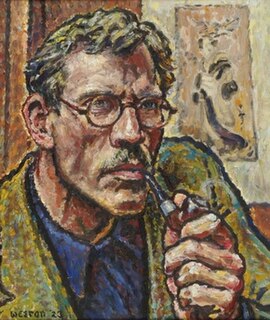 W
WHarold Weston was an American modernist painter, based for many years in the Adirondack Mountains, whose work moved from expressionism to realism to abstraction. He was collected by Duncan Phillips, widely exhibited in the 1920s and 1930s, and painted murals under the Treasury Relief Art Project for the General Services Administration. In later life he was known for his humanitarian food relief work during World War II and his arts advocacy that led to the passage of the National Endowment for the Arts and Humanities Act of 1965. Weston’s most recent museum exhibition was at the Shelburne Museum in Vermont, and his most recent gallery exhibition was at Gerald Peters Gallery in New York City.